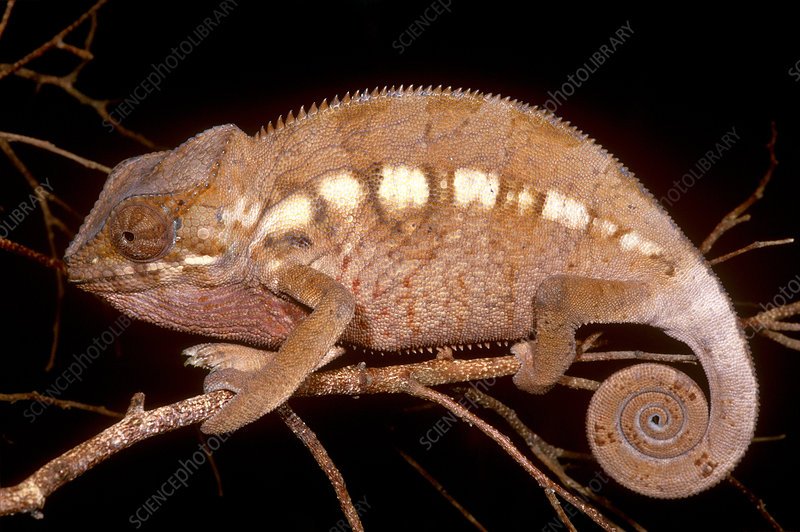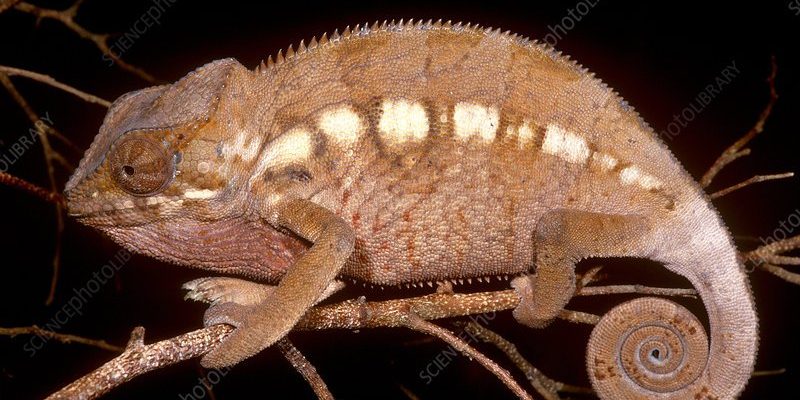
So, picture this: you’re sitting at your kitchen table, sipping coffee, with a chameleon perched nearby, and you think, “Is that little guy a boy or a girl?” This article will guide you through the process of identifying the gender of your Oustalet’s chameleon, helping you ensure that your pet is living its best life. Let’s peel back the layers of this fascinating lizard and explore how to recognize the subtle hints that give away their gender.
Physical Characteristics of Oustalet’s Chameleons
To start, let’s consider the physical traits that differentiate males from females. When looking closely, the most noticeable distinction is size. Generally, male Oustalet’s chameleons are larger than their female counterparts. Males can reach up to 24 inches, while females max out around 16 inches. Imagine walking into a room where one chameleon practically towers over the other; that’s your first hint!
Another key feature is the color. Males tend to display brighter and more vibrant colors, especially during mating season. You might see vivid greens, blues, and even yellows that can change with their mood. On the flip side, females typically have more muted colors, which help them blend into their environment—a practical choice for avoiding predators, but less eye-catching.
Lastly, males usually have a more pronounced crest down their back. This crest gives them a more formidable look, especially when they showcase their colors. Picture a tiny dinosaur in your living room when a male struts around! If you’re observing your chameleon and noting these traits, you’re on the right path to identifying its gender.
Behavioral Traits: Males vs. Females
Now that we’ve covered some physical traits, let’s switch gears to behavior. Chameleons can be quite expressive, and their behaviors can help you determine their gender. Males often exhibit more territorial behavior, especially when they see other males. You might notice them puffing up their bodies, changing colors, or making rapid head bobbing movements. This is their way of asserting dominance, and it’s quite a sight!
On the other hand, females are generally more subdued. They might be less likely to engage in aggressive displays and tend to be more solitary. If you see your chameleon hanging out peacefully in a corner, it could be a sign that it’s a female.
During mating season, males will also engage in elaborate courtship displays, which include bright color changes and vocalizations. If you happen to witness these behaviors, take note—this is a clear indicator of a male chameleon trying to woo a female!
Looking for Eggs: A Clear Indicator
If you’re really scratching your head about whether your Oustalet’s chameleon is male or female, there’s a pretty surefire way to tell—egg-laying! Female chameleons will lay eggs, while males do not have this ability. If your chameleon starts digging in its enclosure, especially if you see it laying eggs, you can bet it’s a female.
It’s important to provide a suitable nesting site for females if you suspect they might be gravid (pregnant). They need a safe space to lay their eggs, or it could lead to health issues. Creating a small, dark area in their habitat with moist substrate, like vermiculite or sand, can help make them feel secure as they dig.
So, if you find yourself in the unique (and sometimes shocking) situation of discovering eggs in your chameleon’s habitat, congratulations—you’ve got yourself a female chameleon!
Analyzing Body Shape
Next up, let’s talk about body shape. Male Oustalet’s chameleons typically have a bulkier, more robust appearance. They often have wider heads and thicker bodies compared to females. Think of it this way: males are often like bodybuilders, showing off their strength, while females are slimmer and more streamlined.
When observing your chameleons side by side, it’s usually quite easy to see this difference. If you find one that looks like it’s been hitting the gym a little too hard, congratulations, it’s probably a male!
You might also notice that males have a more pronounced “bulge” at their base, which is part of their reproductive anatomy. If you’re feeling brave enough (and your chameleon is calm), gently holding it to look closely can help you spot these differences.
Using Coloration Changes to Your Advantage
Another fascinating aspect of Oustalet’s chameleons is their ability to change color based on their environment or emotional state. This ability is often more pronounced in males, especially during mating rituals or when they’re feeling particularly bold.
You’ll often find that a male chameleon will flash brighter colors when they’re feeling confident or threatened. If you notice your chameleon changing colors frequently, especially to vibrant shades during interaction with other chameleons, there’s a good chance you’re observing a male.
With females, the color changes tend to be subtler and more centered around camouflage. They might darken their skin when stressed or during egg-laying but won’t display the same vibrant colors as males.
Consulting an Expert for Confirmation
If you’re still unsure about your chameleon’s gender after closely observing these traits, don’t hesitate to reach out to a reptile expert or veterinarian. Sometimes, it can be tricky even for seasoned chameleon owners to identify gender correctly, especially if the chameleons are still young.
A professional can provide insights into the specific details that you might have missed. Plus, they can ensure that your chameleon is healthy and give you tips on care, diet, and habitat setup tailored to its gender.
You might also consider joining a community of chameleon enthusiasts or online forums. Sharing photos and observations can lead to helpful discussions and advice about identifying gender and care tips. The chameleon community is often friendly and supportive, and you’re likely to find someone who has faced the same dilemma!
Understanding Why Gender Matters
Grasping the gender of your Oustalet’s chameleon isn’t just a fun trivia game; it has real implications for how you care for them. Male and female chameleons have different needs, especially concerning habitat and socialization. Males, being more territorial, may need larger spaces and more hiding spots to reduce stress.
If you’re considering breeding your chameleons, knowing their gender is essential. Housing a male with multiple females can lead to successful breeding, but introducing two males could result in aggressive behavior. Understanding these dynamics helps create a harmonious living environment for your chameleons.
Ultimately, knowing the gender can enhance your overall bonding experience with your pet. It allows you to tailor your care practices, leading to a happier and healthier chameleon.
In conclusion, determining the gender of your Oustalet’s chameleon can be both straightforward and rewarding. By observing physical traits, behavior, and even egg-laying habits, you’ll be equipped to uncover the mystery of your chameleon’s gender. Whether it’s a male strutting its stuff or a female quietly going about her day, each chameleon offers its unique charm. Remember, the more you know about your pet, the better you can nurture its well-being and happiness!

